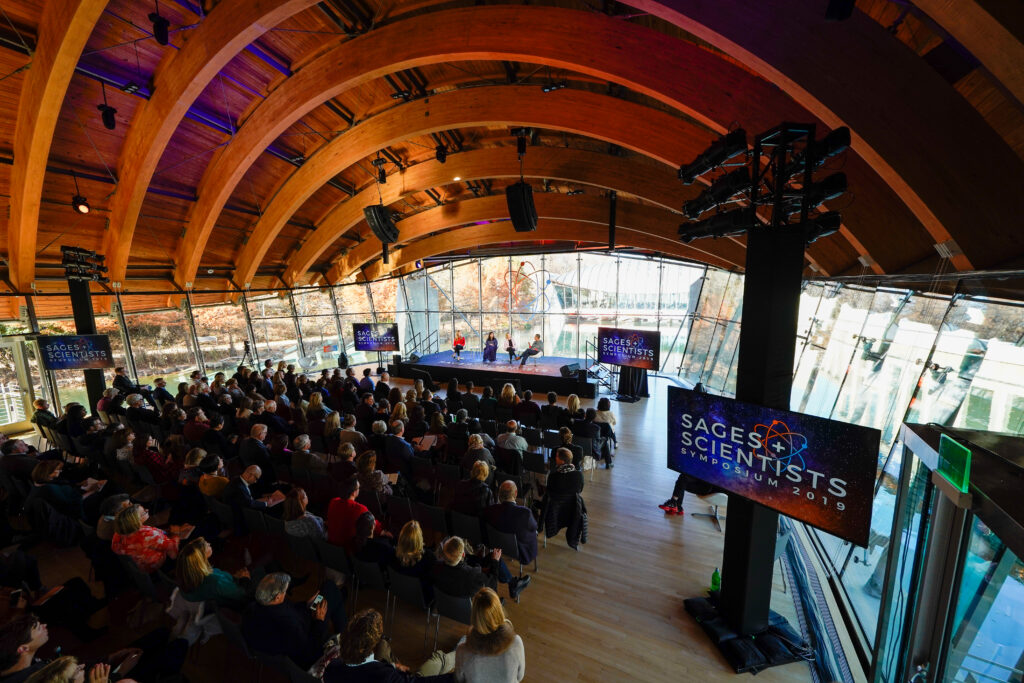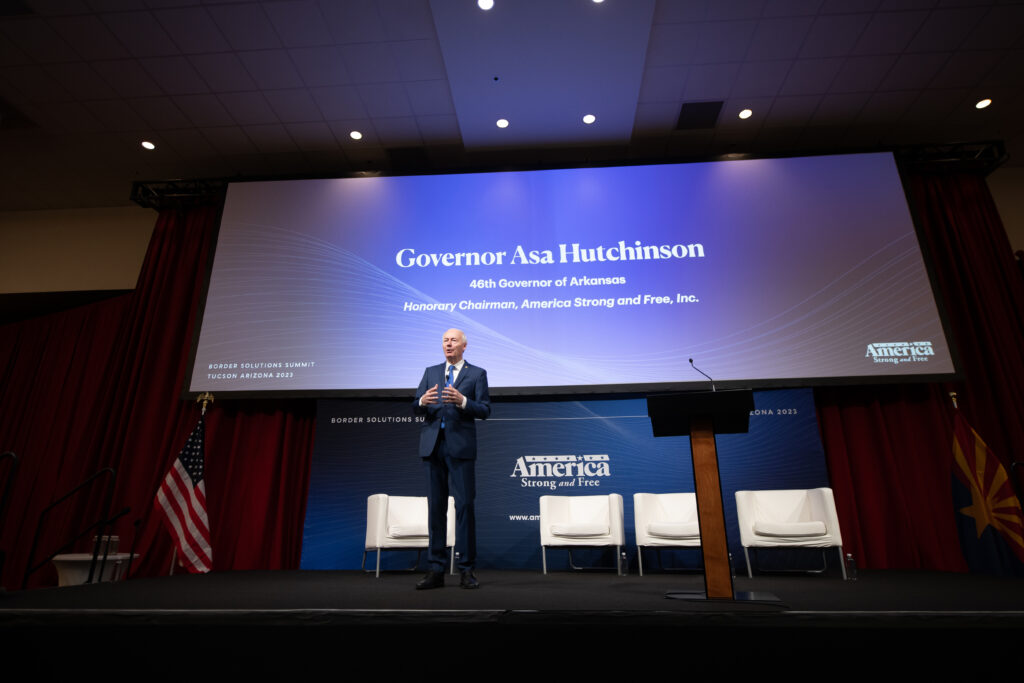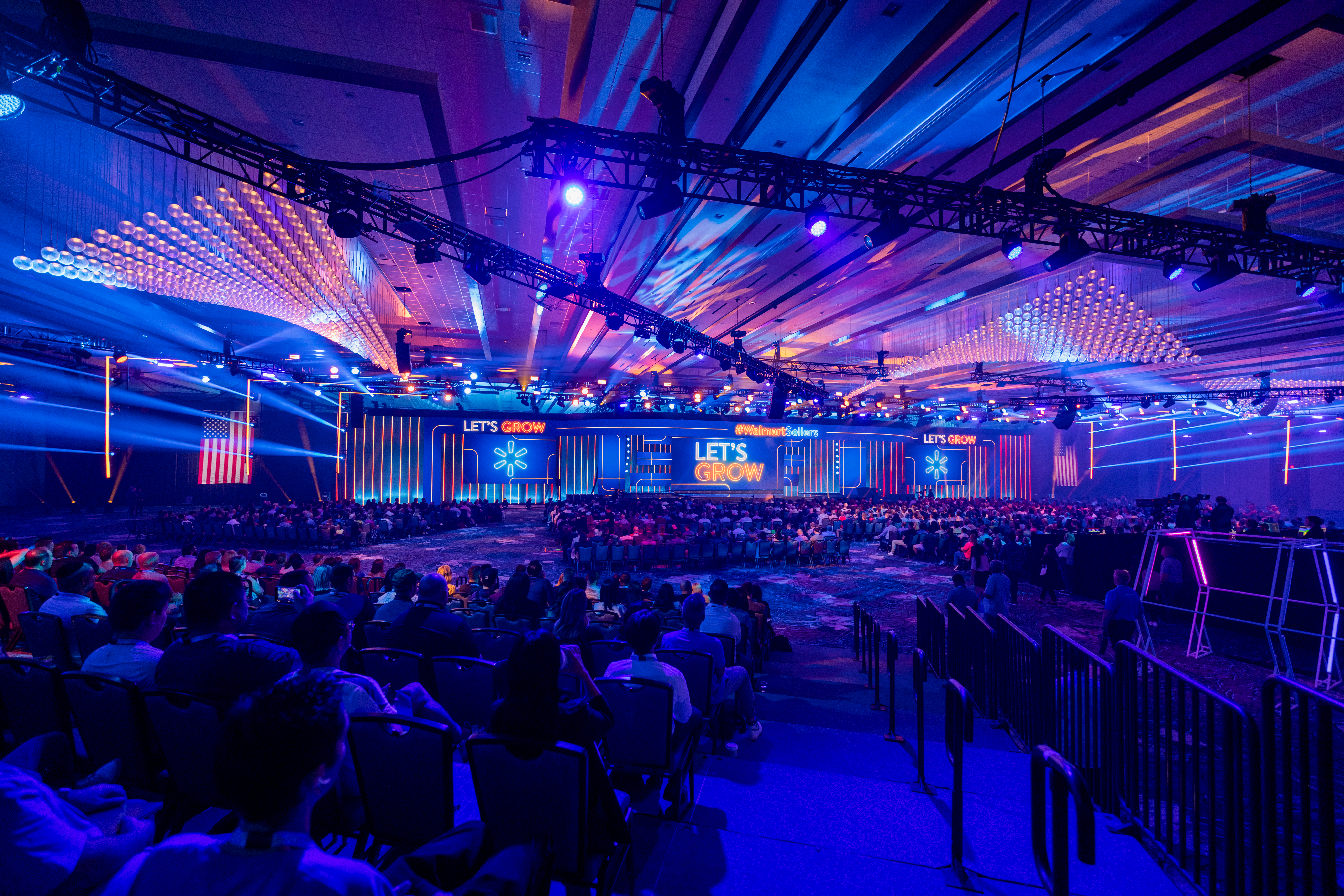Our highest-performing blog post of all time is our List of Best Walk-Out Songs. But let’s be honest—great music alone doesn’t carry the moment. When someone is walking to stage, whether it’s a CEO or keynote speaker, it’s the full production that makes it hit.
This article breaks down the keys to nailing those walk-out moments with polish. It’s a formula that can work across events of every size, and it comes down to two things:
Gear and Crew.
🔊 Audio That Punches
You can’t fake energy. If the song is a banger but the audio doesn’t deliver, it won’t move the room.
- You need subwoofers—because people don’t just hear low-end, they feel it.
- You want a true flown line array, not just powered speakers on sticks.
- And don’t forget the front fills—your VIPs and speakers in the front row deserve the same impact as everyone else.

Photo by Jack Dempsey
This is one of those moments where you don’t want to hold back. The audience’s ears should be fully engaged from the first downbeat.
👉 See our avad3 Event Production Glossary for terms like “line array” and “front fills.”
🖥️ Graphics That Land
The moment music and voiceover kick in, your audience should also see who’s walking out.
That means:
- Full name and title cards, ideally branded.
- Clean, punchy slides built in PowerPoint, Keynote, or with help from our design team.
- On tighter shows, our Production Managers can build them in-house.
- Some clients create them themselves—we’re happy to plug them in.
The key to an engaging walk-out is syncing the moment. Don’t let it be audio-only. We want:
- Sound (music + voiceover)
- Light (see below)
- Screen (on-screen ID)
 All hitting together.
All hitting together.
🔦 Lighting That Moves
Most lower-budget events skip moving lights. But for just a few thousand dollars, any event can level up:
- Add 4, 8, or 12 moving fixtures
- Rent a small lighting console
- Bring in a lighting tech for the day
Lights are typically parked during speeches. But for walk-outs? They come alive. They spin. They color-change. They announce, “This moment matters.”

Photo by Iron Lotus Creative / Stephen Ironside
It’s subtle—but deeply felt. And in our world, that’s everything.
🧠 The Show Caller Is The Brain
Without a show caller, things fall apart. One thing comes in late. Another comes in early. And the walk-out feels… clunky.
With a show caller, all elements move in unison.
At the end of the opening video, a show caller is calling:
“Go house lights. Go lighting move. Go graphics. Go VOG. Go music. Go ASM.”

It’s tight. It’s intentional. And the audience feels it.
Every walk-on deserves a moment that’s owned by one voice with a plan.
👉 The ASM Is The Trigger
ASM stands for Assistant Stage Manager. Their job? Stand by the stage and cue the presenter to walk.
- On big shows, it’s a dedicated crew member with a headset.
- On smaller shows, a Production Manager can wear a wireless comm and cover it.
- Or—if the show has rehearsals—you can rehearse the walk-on timing with the presenter (highly recommended).

Whether it’s a seasoned stage manager or a well-rehearsed exec, someone must own the go.
👉 See our Rehearsals Guide for how to prep your team.
🤲 Wrap-Up: It’s All in the Sync
If you’ve picked a great song, you’re halfway there.
But the win comes from syncing the moment across all production layers:
- Audio that hits hard
- Graphics that clearly ID your speakers
- Lighting that energizes the room
- A Show Caller who calls the moment
- An ASM who cues the walk
All of this rides on one crucial tool: a tight show flow.
If you haven’t already, grab our free Show Flow Template to run your next event like a pro.
This is how we take something as simple as walking to stage—and make it cinematic.
Because these moments matter.











